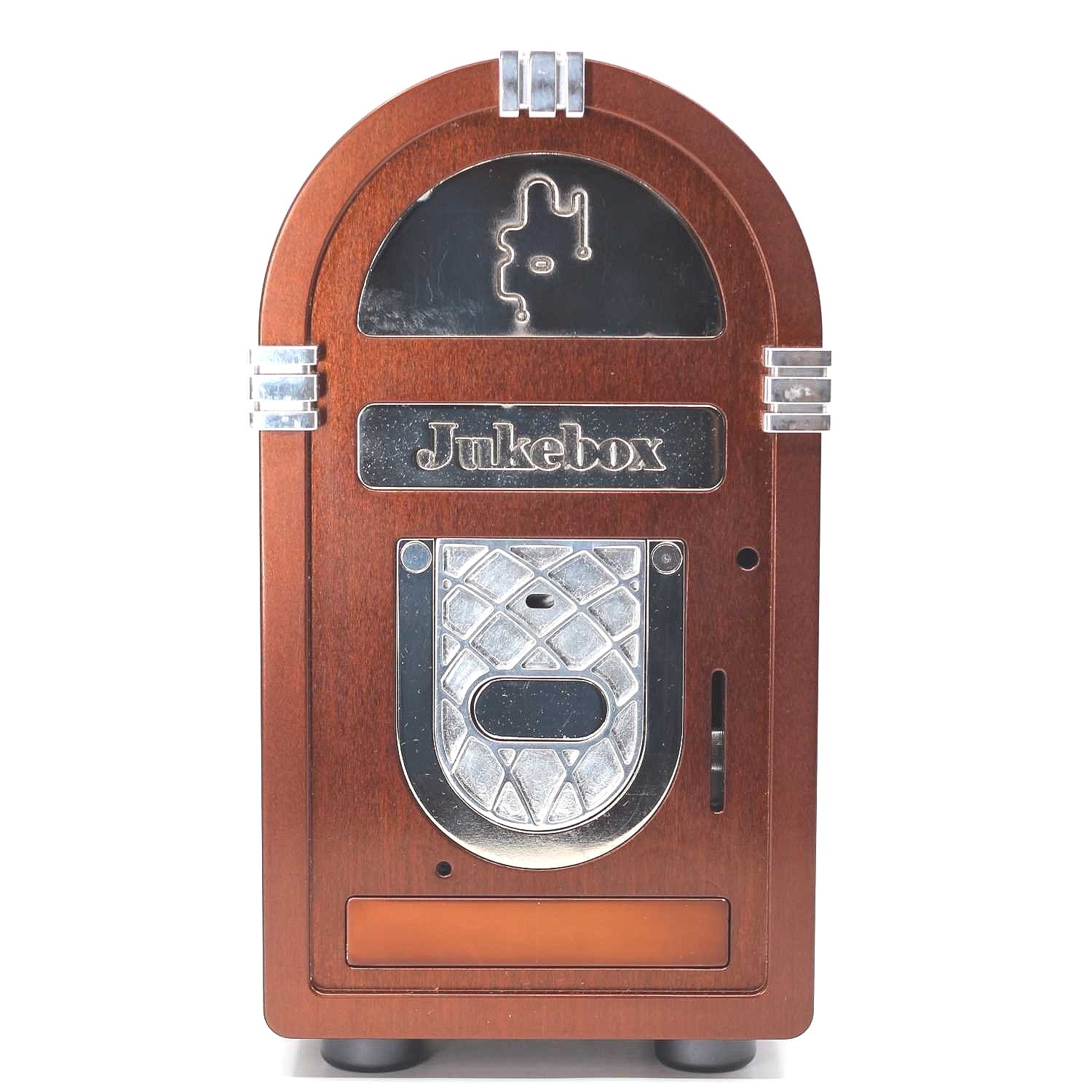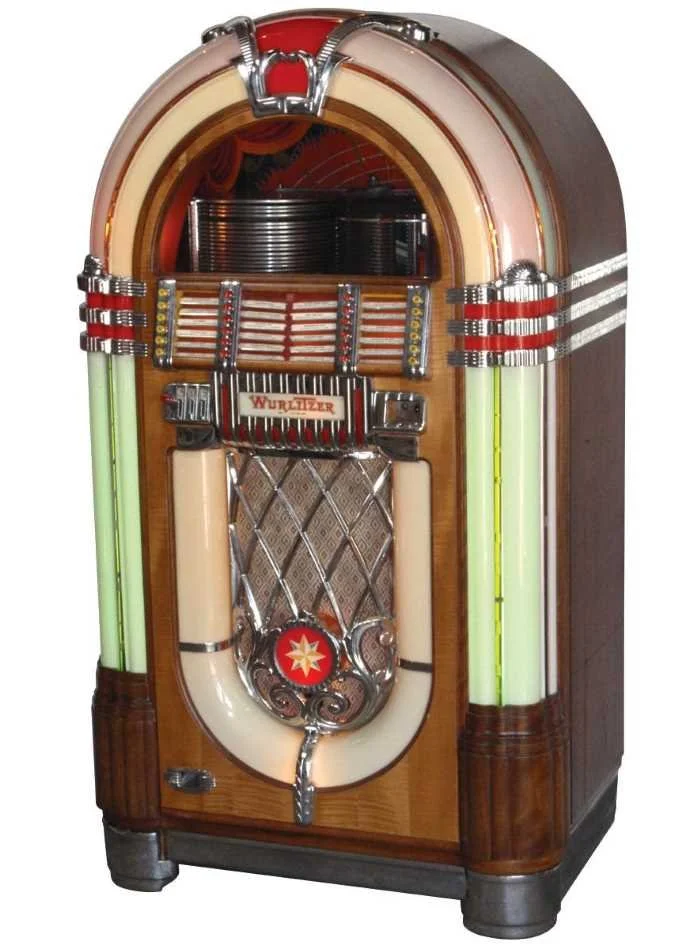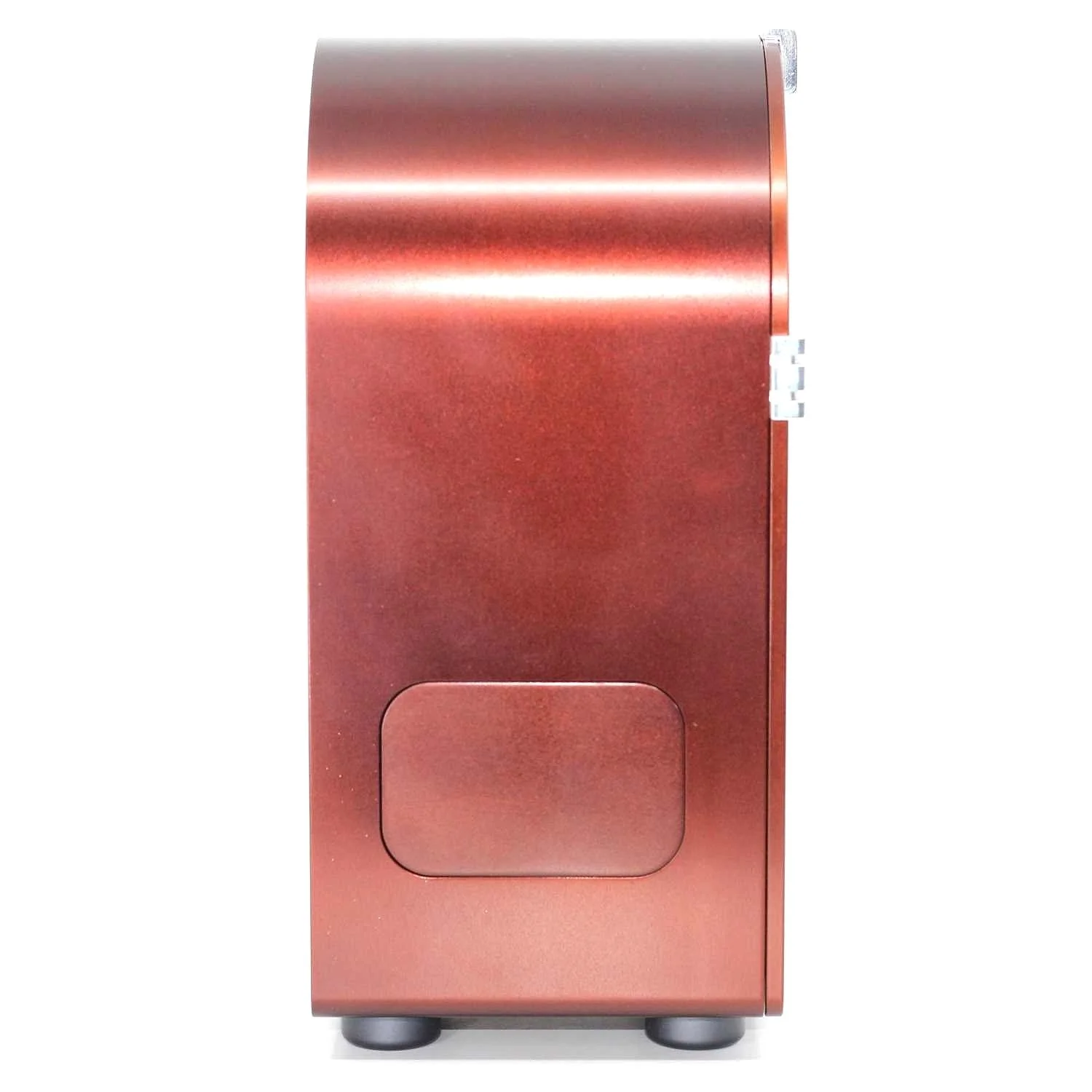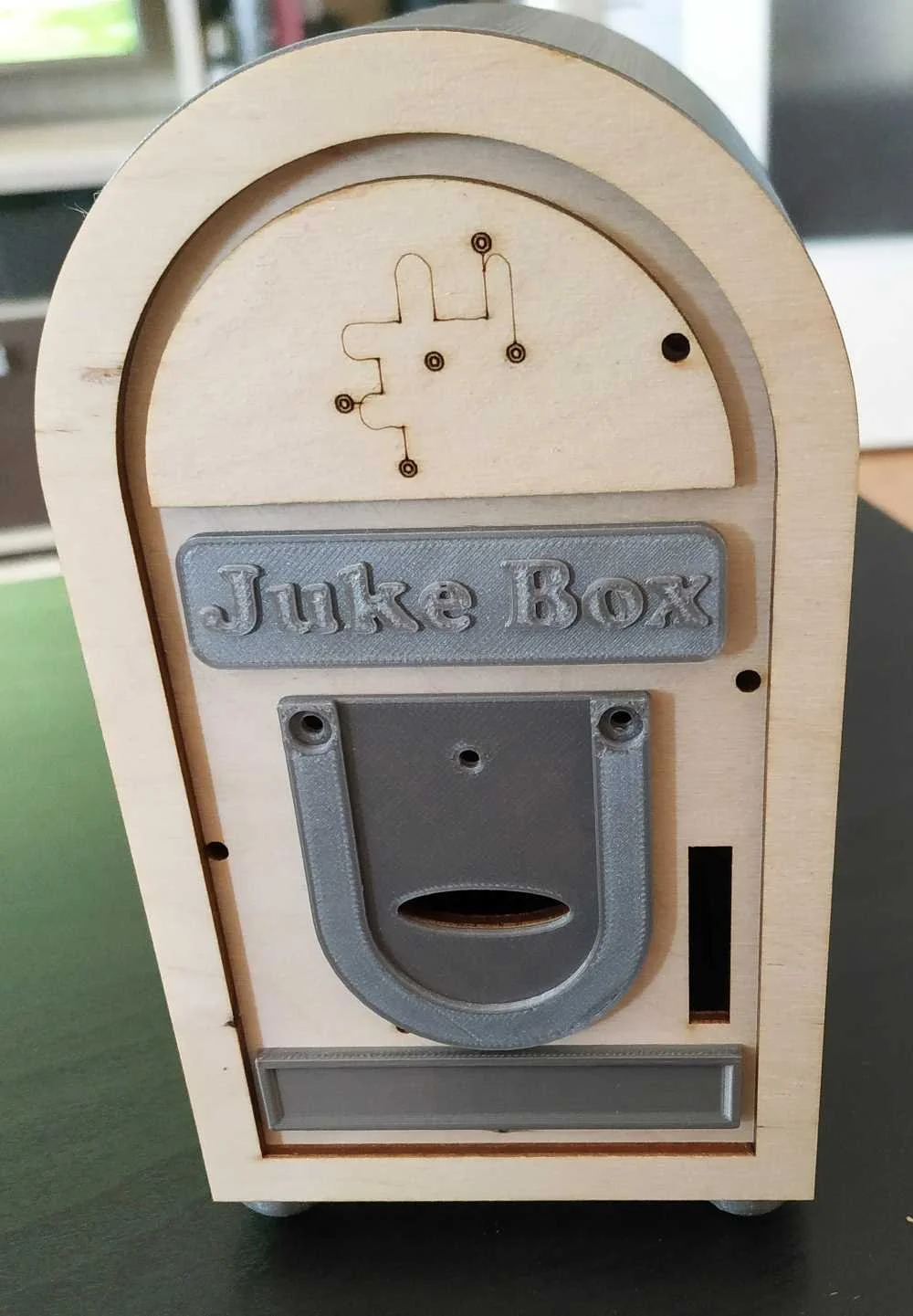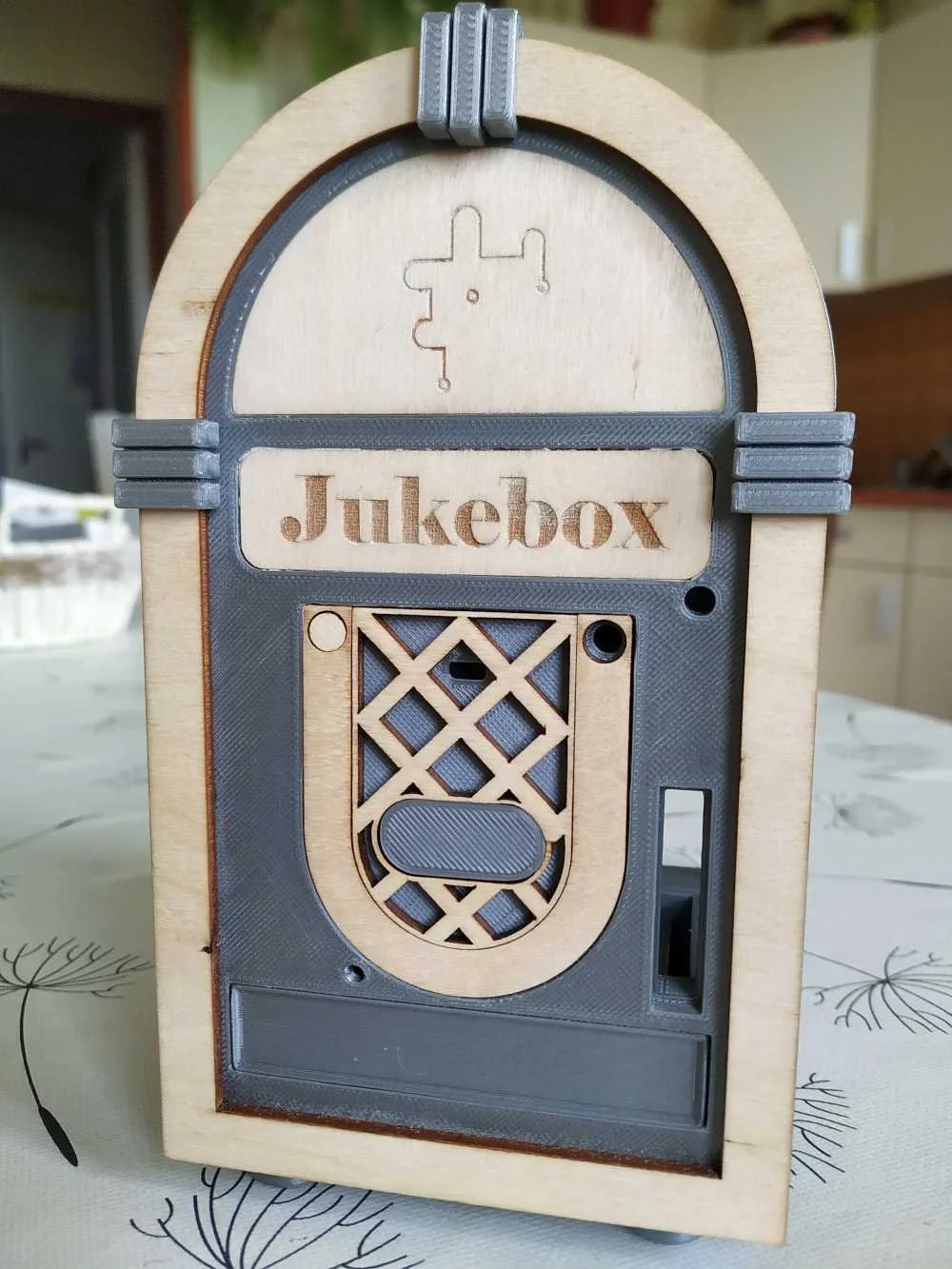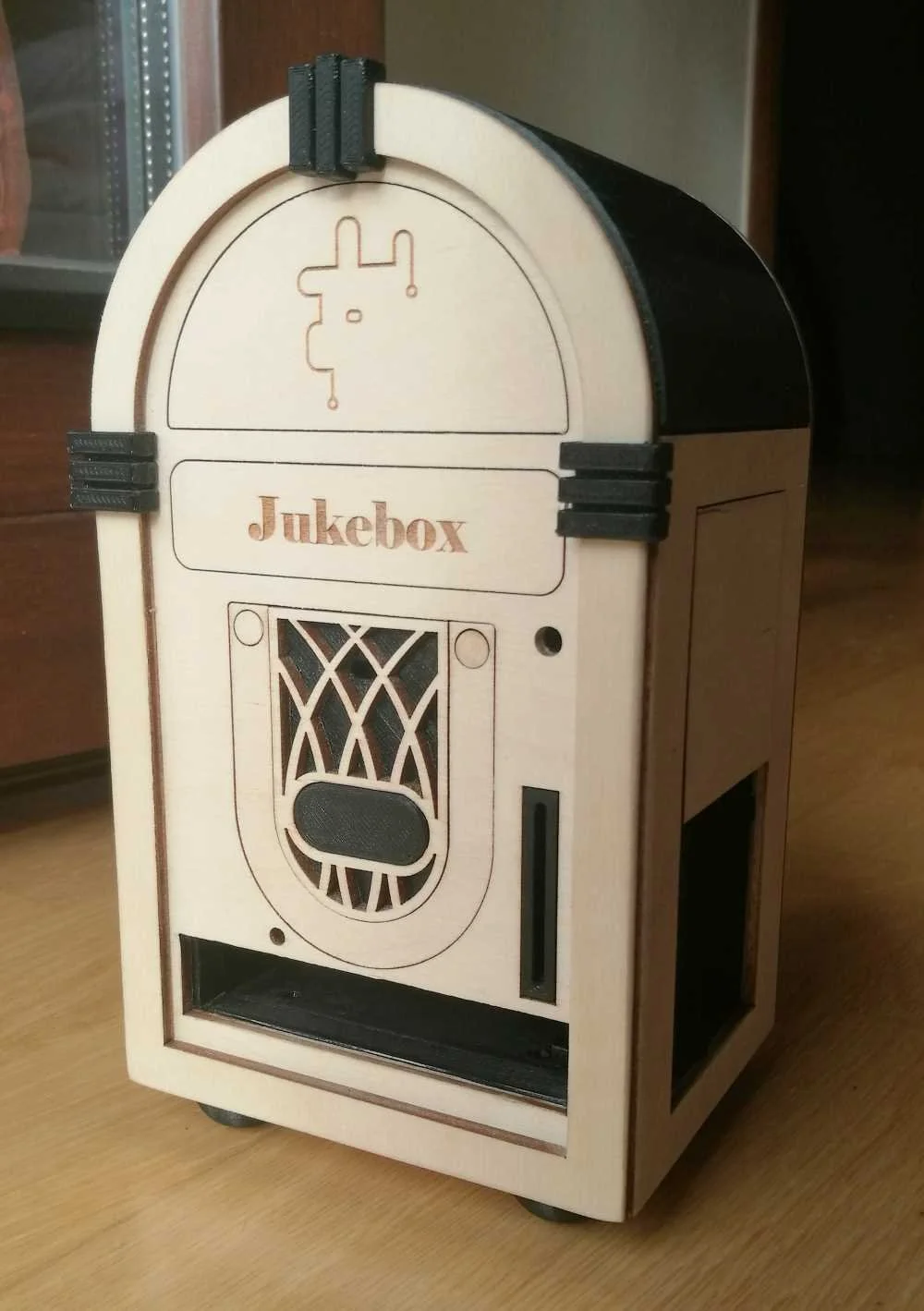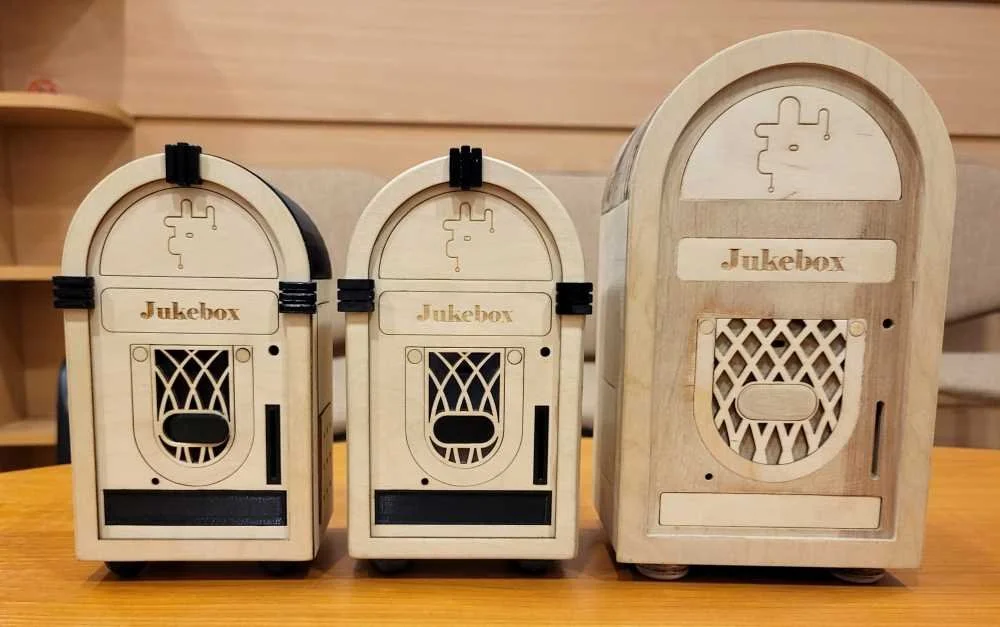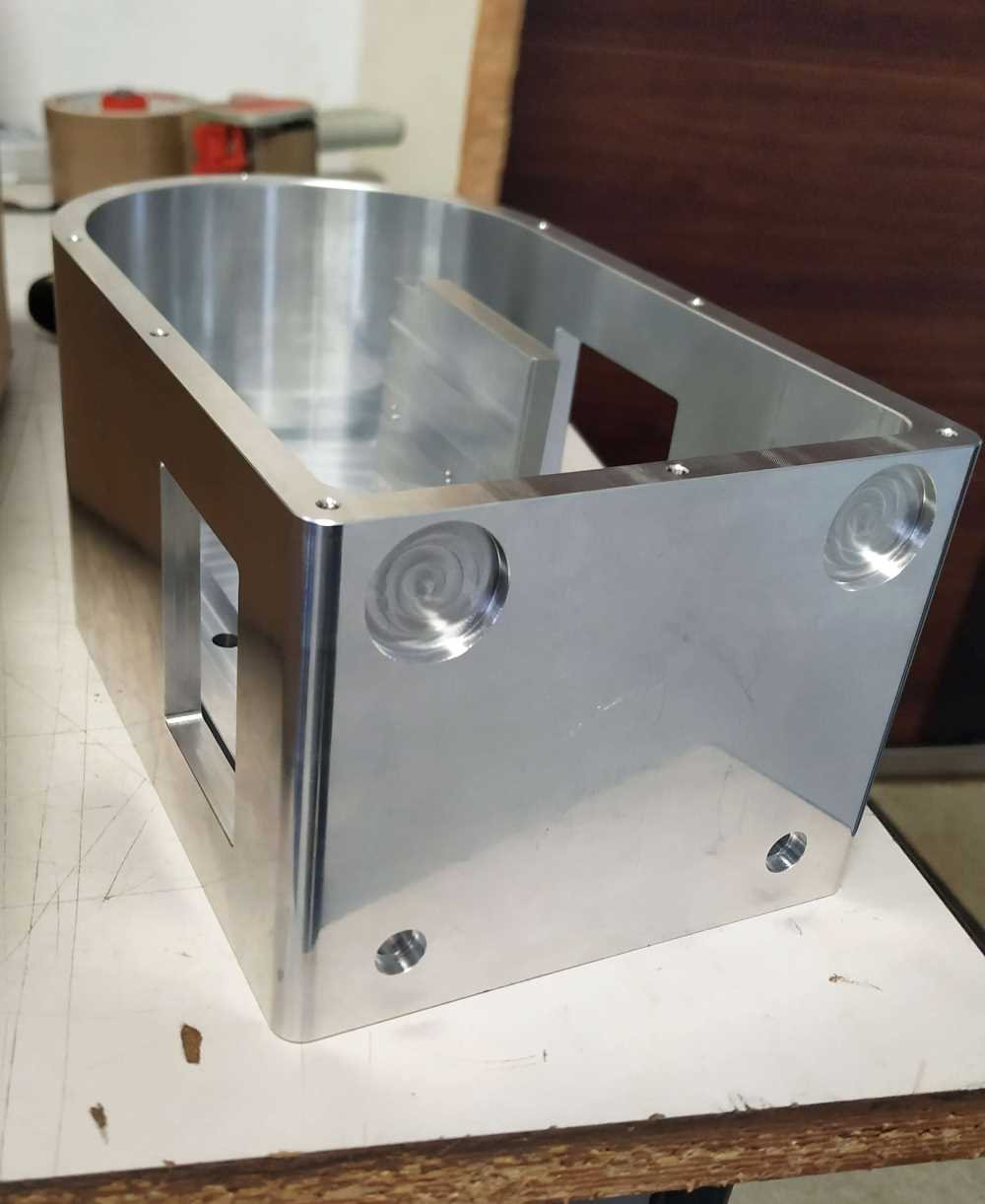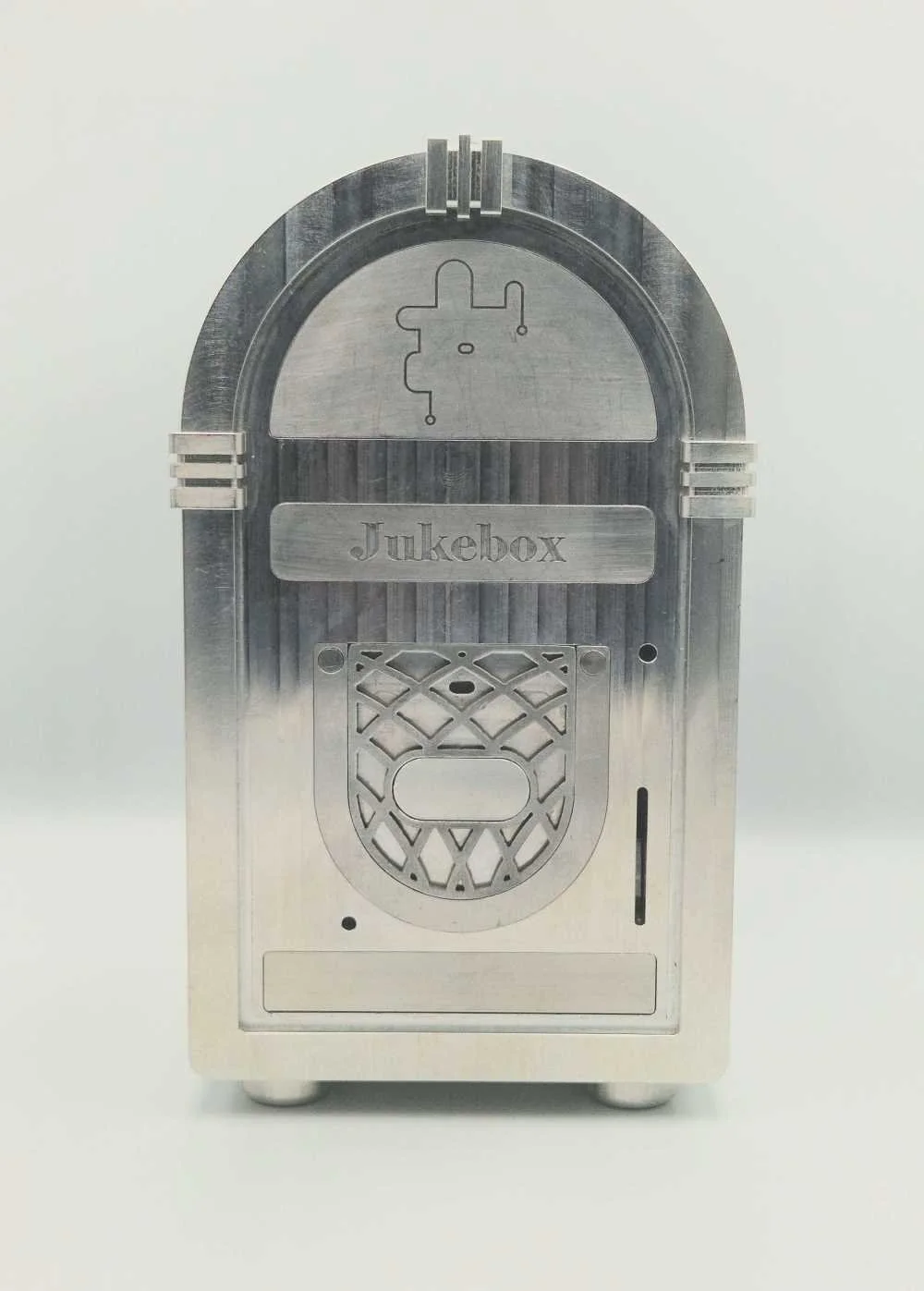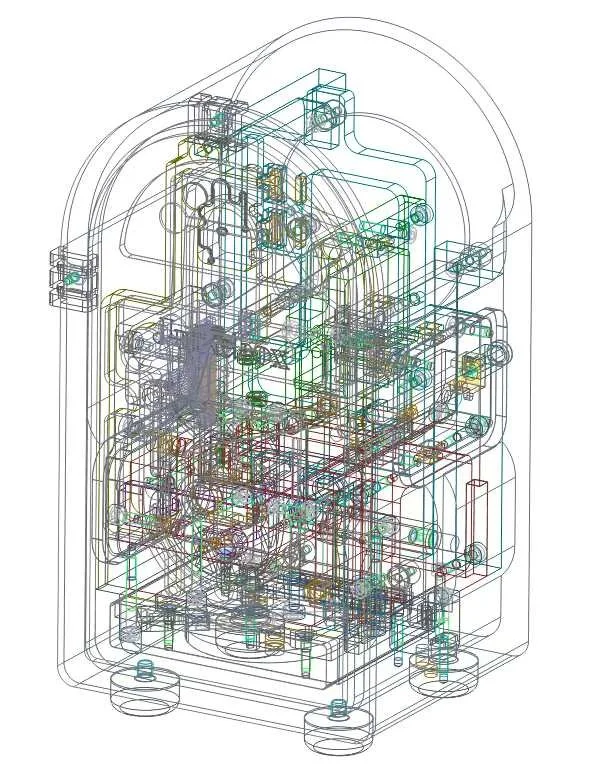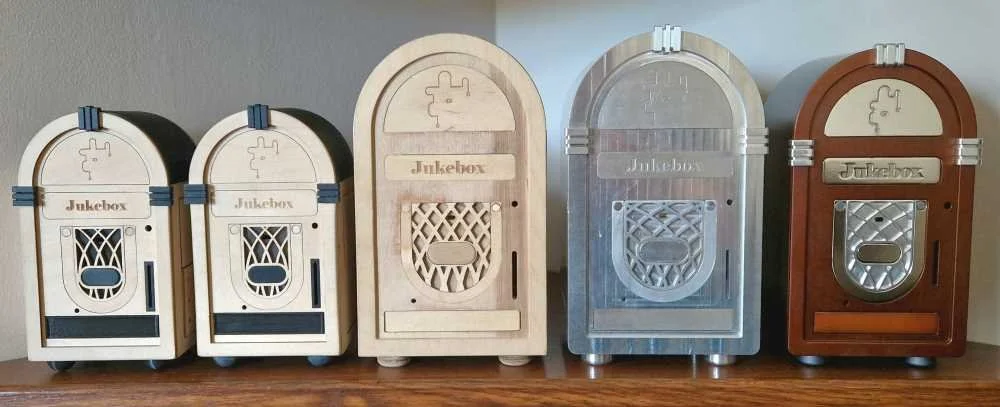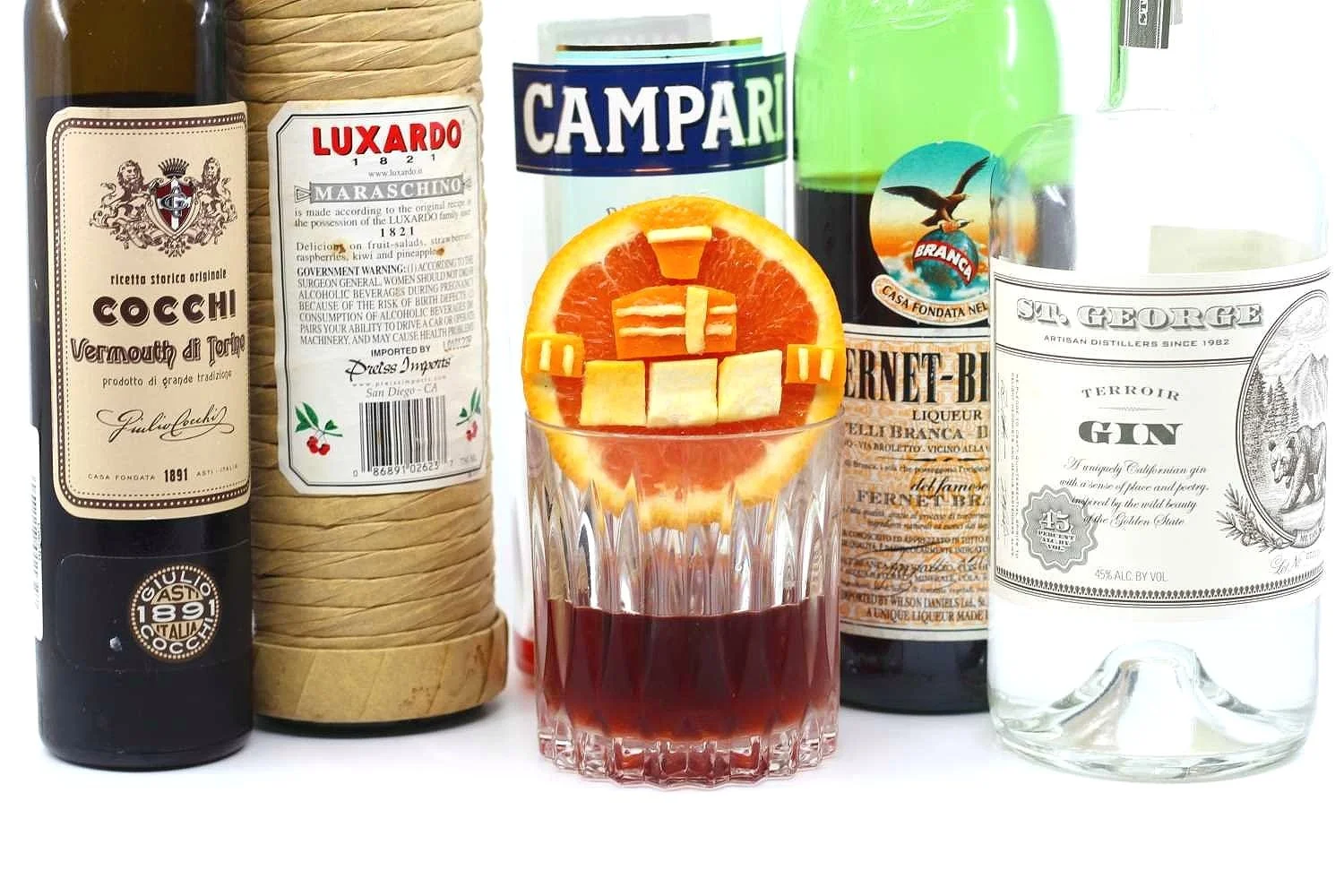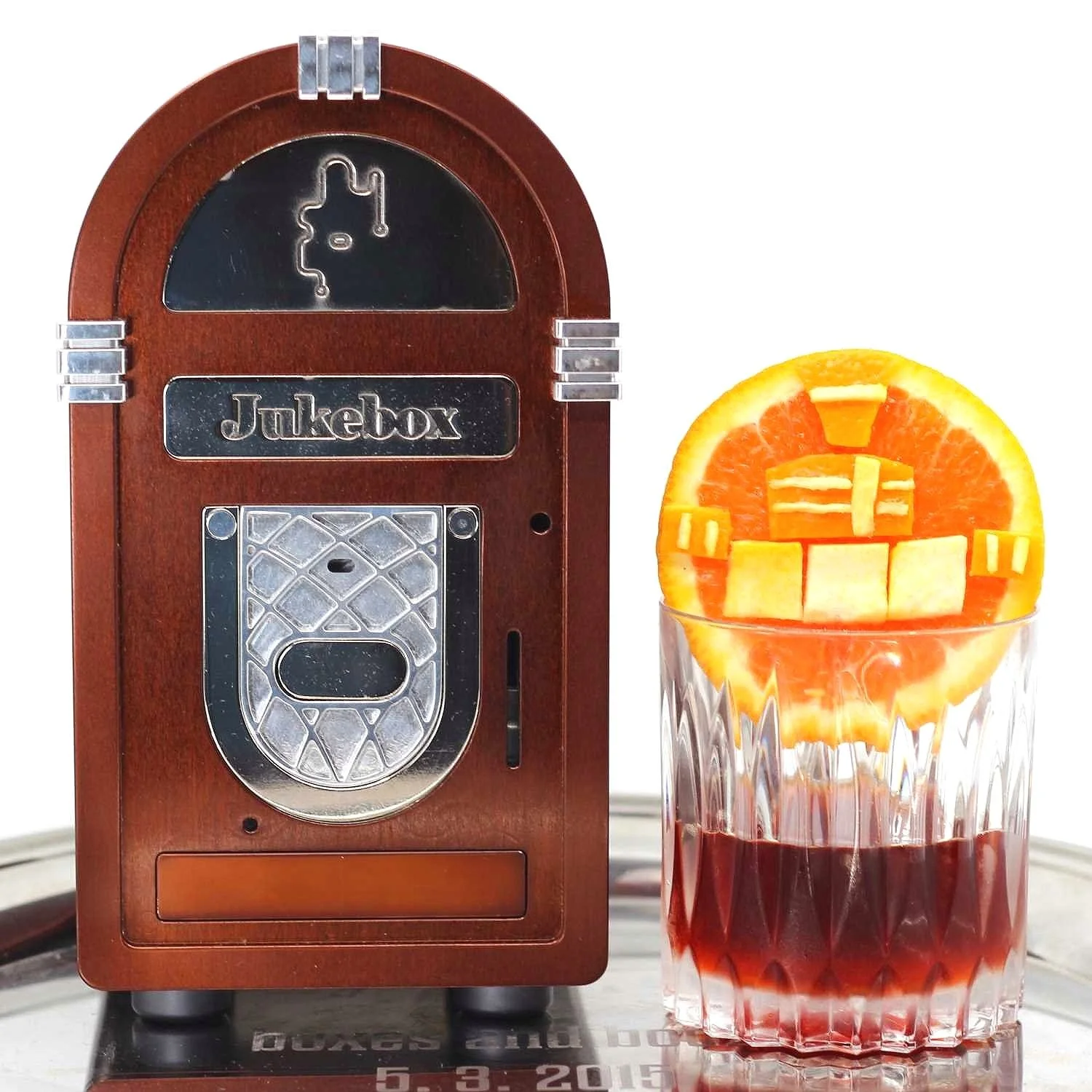On the Record
Jukebox
Jukebox by Daniel Czuriga and Tibor Folytán
Franz Rudolph Wurlitzer was a German immigrant to the United States, who in 1853 started a music company based out of Cincinnati, Ohio. His family had been in this business in Saxony for the previous two hundred years already, so it was no surprise that his new company was initially successful and known for their musical instruments, which they sold to the US military and to movie houses during the silent movie era. Towards the turn of the twentieth century, he branched out into pipe organ production, specifically designed for fair grounds and nickelodeon theaters, and moved the company to New York. His company made player pianos, which, along with coin operated phonographs, were among the first popular type of coin operated music people could enjoy “on demand”. In 1928, Justus Seeberg invented a coin operated phonograph called the “audiophone” which allowed selection from any of eight different records. “Juke joints” were bawdy establishments in the 1940s where these music machines gained popularity, and eventually , their name. By the mid-forties, 75% of all records produced went into jukeboxes! This is when the Wurlitzer brand of jukebox become immensely popular, thanks to its iconic style and flashy designs. One of the earliest designs they produced was the 1015, nicknamed “The Bubbler”.
Wurlitzer 1015 “The Bubbler” c. 1946
Dr. Daniel Czuriga, a cardiologist at the University of Debrecen in Hungary, loves music. You might say it is close to his “heart”. He plays guitar, was in a rock band in his University days, recorded an album and was even played on national radio. Like many academics, and mathematically and scientifically minded people, he discovered and fell in love with mechanical puzzles, too. But unlike most people, who are content to enjoy this fascinating pastime, he embarked on the journey of creation. “Right after solving Big Ben by Brian Young in the Fall of 2020, I felt really inspired. I wanted to experience a similarly satisfying sequential discovery (SD) solve, which lasts even longer. That night, while lying in my bed, I started wondering what the perfect puzzle for me would be like. I knew instantly that it would have cool moves like Big Ben by Brian Young or Slammed Car by Juno, plus some magic as SMS Box by Brian, maybe the moves not too blinded. But most of all, it would last long enough to create a complex, prolonged SD journey. That night, I remember vividly, various mechanisms and actions were running through my mind, and I made some sketches the next day. This time, there was no theming yet.
it’s great, it’s great, it’s great … do I sound like a broken record?
After elaborating the mechanisms on my initial sketches, I instantly knew I must add a great theme to the puzzle. I wanted to have something cool that connects with me a bit. That was when I knew it should have something to do with music. I play the guitar and had a massive musical passion during university years, where we had a rock band, recorded an album and had quite a few gigs and radio plays nationwide. At the same time, I knew a guitar-themed puzzle would be too challenging… That is when the word “Jukebox” popped into my mind. I loved the idea that it has the word “box” in it, which is very common in the puzzling world, and at the same time it is strongly related to music. The fun factor of the Jukebox theme was an extra. I knew from the beginning that a great thematic SD puzzle is not only cool looking, but the steps are also closely connected to the theme. Thus, I felt that Jukebox has quite some potential.”
time to face the music
A musically themed, complex, lengthy sequential discovery puzzle box? For most people who enjoy this hobby, that sounds like sweet music to their ears. Now just imagine if it turned out to be every bit as involved, complex, tricky, satisfying, and entertaining as advertised, with multiple steps of discovery, multiple hidden compartments, and multiple pieces which are part of a thematic meta-puzzle, while simultaneously maintaining the overall theme perfectly and throughout the experience, right up to the point that it actually plays a song!?! That would be too much to imagine. What if on top of all that, it was manufactured as a beautiful reproduction of a vintage Wurlitzer style jukebox crafted from anodized aluminum? The mind boggles. It almost sounds like a fever dream of the perfect puzzle box from an aficionado with the drive and means to pursue it to production. If it could be pulled off, it sounds potentially award winning ….
go on, give it a whirl … itzer
“The first and major challenge was to build a team for the Jukebox project. While I was trying to do my best to elaborate on my sketches, converted them into PDF plans using an editing software (Photoshop), I knew I would eventually have to collaborate with somebody, who has the skills to get my plans off to the ground and into physical reality via prototyping. I went a long way to find a designer collaborator. I approached approx. two dozen people from all over the world, some being renowned Craftsman, some upcoming designers. Everybody was quite supporting while looking at the plans, but I had to realize that no one will be able to prioritize Jukebox over one of their own design/production plans. It almost took me a year before I found somebody to actually start working with. I knew that based on the proposed complexity of Jukebox, CNC-machining would be inevitable at the end to make it work. So I just randomly entered keywords into Google and Facebook, like “engineering”, “CNC”, “3D printing”, etc. That was when a FB site came up, with a video of a 3D-printed installation of a mill with rotating gears. I did not even know back then, if the owner of that site was Hungarian or it was just an AI-translated website. I took my chances, and I messaged the owner. It was not too long afterwards when I received an answer. Not only the person was Hungarian, but he was from my hometown, Debrecen, and on top of it, he already knew me from my medical background. I thought that was it, it is written in the stars. This person was Tibor Folytán, a mechatronic engineer, who finally performed the prototyping of Jukebox using laser-cut plywood and 3D-printed PLA.
Jukebox prototypes courtesy of Daniel Czuriga
He had his own ideas incorporated into my initial plans, so we decided that he would become a co-designer of Jukebox. After 2 working prototypes, we sent a copy to Phil Lewinton (Release the Bolt and Impossible Planet puzzles) in the Czech Republic for playtesting. Phil was kind enough to provide us with some useful advice regarding to sizing, complexity and stability of the puzzle. That was when we increased its size with a good 25-30%, to make it more stable and easier to produce.
Upsized prototype - courtesy of Daniel Czuriga
Tibor also utilized CNC-milling when creating this 3rd, bigger prototype.
CNC milled prototype - courtesy of Daniel Czuriga
At this point we were certain that the medium we wished to use was quality hardwood. However, Tibor and I have reached our limits and knew that we must find a Craftsman, who has not only the knowledge and skills, but also the equipment to create a master prototype of Jukebox, and later on is capable of performing serial production. That was when I came across a patient of mine, with whom I started chatting about his occupation. It turned out that he was responsible for CNC-network maintenance at various companies. This guy recommended me a local company from Debrecen, which performs professional CNC-milling and is open to start-up projects. This is how I got to know János Kiss, the head of the company called AJT System Technology, and started brainstorming together. János was kind enough to recreate our plans in CAD and made professional workshop plans, which were followed by CNC-milling sessions to produce a working prototype of Jukebox using aluminium.
milling from solid aluminum - courtesy of Daniel Czuriga
He also raised our attention to the fact, that the complexity of Jukebox definitely requires metal medium for precision and stability. As the finished, full-aluminium prototype turned out to be over 12 lbs, we instantly knew that if we do not come up with something to lighten the weight, our future customers will probably deal with arthritis after playing with our puzzle.
12 pound puzzle prototype! - courtesy of Daniel Czuriga
So we had to involve somebody, who is an expert in high-level engineering. This person was Tibor Tar from TTengineering, who redesigned the puzzle, optimized its size and weight and exchanged internal parts from aluminium to industrial, CNC-machined plastics.
re-engineering the puzzle - courtesy of Daniel Czuriga
What we still had to figure out was whether to leave the puzzle in a raw aluminium design or find a way to create a realistic representation of the original Jukebox, also known as the Wurlitzer. I really wanted it to be as stylish and authentic as possible, so I made some colour design plans. For a nice surface treatment and to minimize the markings of the CNC work, I had to provide a clean, polished surface to test various anodizing tones and platings. The initial electro-polishing did not work out well, so I went to a guy who was an expert in mechanical polishing (he previously worked in a medical instrument factory). The mechanical polishing was a game changer and turned out to be really nice resulting in crystal-clear mirroring surfaces. Next, I sent the individual pieces to a company who specializes in anodizing and plating. I insisted on the authentic appearance of Jukebox, so they first had to order some brown-toned anodizing dye from Switzerland (not the most popular colour in the anodizing business), then we ran a few test rounds with various tones of brown combined with nickel plating.
test anodization and plating - courtesy of Daniel Czuriga
After the surface treatments, the Jukebox not only worked very well, but became really stylish too. It came a long way, evolved for almost 4 years before it reached its final shape and look.”
evolution of the Jukebox - courtesy of Daniel Czuriga
Daniel’s labor of love was well worth all the effort, and now that this year’s International Puzzle Design Competition (IPDC), (where his puzzle took home one of the Jury Grand Prize awards!) is over, he and his team will focus on the main production run for those who will be lucky enough to acquire one of these rare items. “Every step of the way was a learning process for me. I virtually knew nothing about puzzle designing, CNC-machining, surface treatments etc., before Jukebox. I really hope to utilize the knowledge I gained at future projects, and to significantly reduce the time factor for those. Altogether, the Jukebox project took almost 4 years. First, I wish to finalize this project with serial production and hopefully, successful sales. Then, maybe I will have a little rest. But if the Jukebox is received well, I wish to work on further concepts and hopefully finish them a lot faster.”
I had the honor to experience this puzzle as it made its way to the IPDC. I was astounded when I opened the package and took a first look at the absolutely gorgeous manufacturing, nestled perfectly inside. The details are impressive and the choice of anodized finish lends the piece an authentic look that almost seems like real wood. There is a lot to explore and you know immediately you will be in for a journey, with components and compartments waiting to be discovered on all sides. Getting started won’t take very long as you discover what is possible and what tools you are given to begin the adventure, but then you will certainly struggle for a while, even once you correctly interpret the provided clues. Fun hints and details guide you along the way as you advance through the compartments and discover more objects which become relevant in the end. The puzzle is very well thought out and thematic, and the ending is sensational. Jukebox is a best puzzle of the year candidate, an IPDC winner, and will be a prize possession for lucky collectors.
Jukebox Opera by Christa Manalo
Here's a toast to music! The cocktail was created by Gloucester, Massachusetts bartender Christa Manalo a few years back and can be found in the pages of Fred Yarm’s Boston drinks bible, Drunk and Told (the sequel to his book Drink and Tell). Manalo, who got her start on the Jersey shore (a place close to my own roots) mentions that she prefers her drinks to be local, seasonal and have that “homemade element”. She also mentions that she is terrible with naming cocktails, but this one could not have been better.
a night at the opera
The drink reads like a Negroni, with the amaro part split up into three different profiles. The Campari is still there, but it’s augmented (or pushed aside) by the Fernet, a well known bully at the bar. Cherry liqueur brings it all into alignment and amps the flavors up, for an overall experience you can rock out to for the price of a few quarters in the jukebox. Cheers!
Jukebox heros
Jukebox Opera by Christa Manalo
1 oz St. George Terroir gin
1 oz sweet vermouth
½ oz Fernet Branca
½ oz Campari
½ oz Luxardo Maraschino liqueur
Stir ingredients with ice and strain into a favorite glass. Orange twist.
explore more:
BONUS!
enjoy the “double album” and keep the record playing over on Five Sinatras for this coordinated release!

